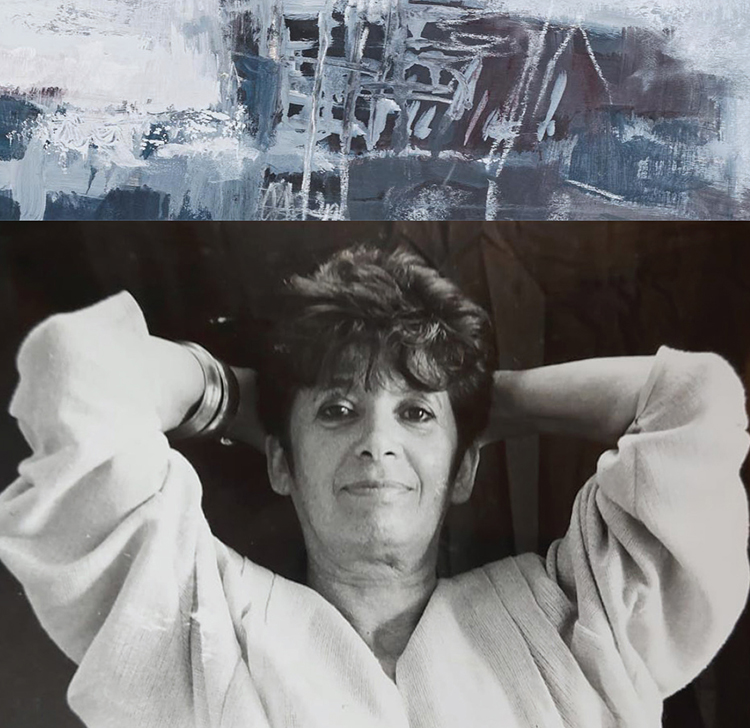Biographical Notes
Born July 1st, Berlin, Germany. The only child of Ilse Fabian – a musician/singer, and Michael Tennenbaum – a scientist in biochemistry.
Father invited to join biochemistry research team in Cardiff, Wales, as part of a project aiding Jewish scientists to escape Nazi Germany.
Steffa and mother leave Berlin; the family reunites in Cardiff and is naturalized as German-Jewish refugees.
The family name is officially changed (Anglicized) to Tenby.
Home life is suffused with classical music, especially piano music, and song.
The Tenby family settles in Liverpool, England. During WWII they experience heavy German bombing, due to proximity to the British aircraft industry.
Mother diagnosed with breast cancer.
Steffa joins the Habonim Zionist Youth Movement and attends activities throughout her school years. The Habonim affiliation becomes ‘a second home’ and Zionist ideals influence the future course of her life.
Attends Calder High School for girls.
Parents receive notifications via Red Cross regarding German and Polish family members who perished in concentration camps. They include: maternal grandmother – Emma Fabian, who died in Theresienstadt; maternal uncle – Fritz Fabian, who died in Auschwitz; paternal uncle – Adolph Tennebaum, his wife and two children, who died in Mauthausen. The fate of many other family members from Poland is still unknown.
Mother dies after long battle with cancer.
Graduates from high school.
As a youth counselor/Madrichah, sent on a Habonim Zionist Youth Mission to Israel for nine months; participates in Zionist leadership seminar at Beit Berl and pioneering agricultural work in Galilee. Stories of great hardship and heroism during Israel’s 1948 War of Independence leave an indelible impression.
Attends Zionist Pioneer Agricultural Training Farm (Hachshara) in Reading, England – a training program in preparation for Aliyah and communal life on a kibbutz.
First begins to draw and studies art books in library.
A summer holiday in France extends to a year, during which she studies French at the Sorbonne, Paris; visits major art museums; teaches English; becomes a Jewish Summer Camp counselor in Le Cannet, south of France.
Moves to London. Attends art courses at the Royal Academy and studies music – classical guitar and voice.
Marries a young doctor, Nicolas Daniel Reis (previously Königsberger), also a German-Jewish refugee.
Travels to Spain; produces watercolor series.
Joins husband in Fayid, Egypt, where he is posted as GP doctor to officer corps for his National Service with the British Army. Travels extensively throughout Egypt.
Produces landscape drawing of surroundings; visits Cairo Museum and sees the golden sarcophagus and treasures of Tutankhamun’s tomb; teaches English; works as secretary to the Colonel of Education for the British Army in Egypt.
Travels throughout Jordan – Akaba, Jerash, Amman, Jerusalem and Jericho.
Moves with husband to Limassol, Cyprus, where he is transferred at the end of British Mandate in Egypt.
Creates landscape sketches and watercolors.
Returns to London and gives birth to eldest daughter – Joanna Susan.
Immigrates/makes Aliyah to Israel with family and settles on Kibbutz Ein Harod in the Jezreel Valley. Husband serves as general M.D. practitioner for the region.
Local landscapes rooted in the ancient land of Israel become a central motif in her artwork.
Studies painting at Oranim Art Seminar with artists Marcel Janco and Yaacov Wexler.
Works for Kibbutz industry translating business correspondence.
Second daughter is born – Tamar (Tami) Jennifer.
Becomes interested in portraiture; sketches kibbutz founding members and leading socialist ideologues of the time. Begins working in clay.
Moves with family to Afula Hospital Residency, where husband starts specialization in general surgery.
Third daughter is born – Naomi Jane.
Moves with family to Tel Hashomer Hospital Residency, Ramat Gan, following husband’s medical career. Continues drawing and studies classical guitar.
Relocates to London with family, where husband trains as orthopedic surgeon. Studies art at the Harrow School of Art and at the Royal Academy of London. Exhibits at the Royal Society of Printers and Etchers. Receives private commissions for sculptures.
Returns to Israel with family and settles in the ancient picturesque town of Safed, northern Galilee.
Husband is appointed Head of Orthopedic Department at Rebecca Sieff Hospital.
Holds her first exhibition at a rented studio in Safed’s renowned Artists Colony.
Establishes her own permanent studio/gallery at Simtat Tet Vav, Artists Colony, Safed. Draws/paints numerous views of Safed’s historic old city and its surroundings. Works in oil, acrylic, watercolor, and various printing techniques, such as etching, lithography, and silkscreen.
Becomes a formal member of the Painters and Sculptors Association of Israel.
Active as leading member of the Artists Colony and promotes Safed’s cultural scene; organizes events, classical music concerts and art film screenings; founds Safed’s first Music School.
Active member of the Sieff Hospital Women’s Voluntary Organization; helps establish a library for patients.
Exhibits in the United States: Connecticut, Pennsylvania, and New York City.
Yom Kippur War. Tends to wounded soldiers in Orthopedic and Traumatology Department at the Sieff Hospital, Safed. Deeply affected by the trauma of this war and its aftermath.
Paints “Golan ’73” series, following Yom Kippur War. Teaches at Summer Art Course for art students. Publishes several etching editions.
Exhibits “Golan ‘73” series at Ben Uri Art Gallery, London. Exhibits in Manchester, UK.
Features in documentary film sponsored by Ministry of Culture, about prominent Israeli artists in Safed’s Artists Colony. Film is screened by Israeli ambassadors/cultural attaches throughout the United States on the occasion of 30 years to Israel’s statehood.
Visits Greece and Crete. Creates drawings and watercolors of local scenes.
Establishes a second home and studio at 220 Ben Yehuda Street, Tel Aviv, known as The Open Studio. Remains active in both locations, spending summer seasons in Safed, where her gallery remains open year-round. Her work is on permanent exhibit at the General Exhibition of the Safed Artists Colony.
Travels across the United States. Exhibits in New York City and Washington D.C.
Works and exhibits at lithographic atelier at Cité Internationale des Arts, Paris.
Creates group of major semi-abstract landscapes and a variety of fully abstract works.
Travels and sketches in Italy. Visits major museums and is inspired by the beauty and culture of classicism.
Creates series in various media on Tel Aviv’s urban views: “Rooftops and Antennas” and “Masts and Antennas.”
Attends rehearsals of Tmuna Dance Theater Workshop, Tel Aviv. Sketches creative process of movement/dance-theater improvisation.
Travels in Switzerland, Austria, Germany (Artist Exchange), Hungary.
Travels across East and West Coast of the United States: New York, Boston, Washington D.C., New Orleans, Los Angeles, San Francisco, Sacramento, and more.
Visits major national parks and important museums/collections.
Travels to Japan, China and Hong Kong, absorbing the aesthetics, history and culture of the Far East.
Travels to Germany and England. Receives many invitations to exhibit.
Awarded grant by British Council.
Exhibits at Gallery 10, London.
First visit to the city of her birth, Berlin – a painful personal experience.
Invited by Berlin Arts Council to exhibit a retrospective in November 1989.
Visits East Berlin and the Weissensee Jewish cemetery, which was not destroyed by the Nazis.
Finds her maternal grandfather’s grave, who died before her birth.
In wake of Berlin visit, creates comprehensive “Berlin Memorial” series.
Awarded grant by Cultural Department of German Embassy, Tel Aviv, to mount retrospective.
Opens Steffa Reis – Retrospective 1979-1989, on November 12th in Berlin, just three days after experiencing historic fall of the Berlin Wall.
Begins work on three series: “Square within a Square”; “Small Joys”; “Calendar Pages.”
New York City: attends rehearsals at the Upper West Side Dance Festival, Riverside Church.
Draws images from live dance and presents these as a graphic display at dance festival opening.
Creates “Transcriptions from Dance Images“ series, which is shown at Bertha Urdang’s Art Gallery.
Invited by Iberian Institute in Jerusalem to mount travelling exhibition in South America: Sao Paulo (Brazil), Lima (Peru), Mexico City (Mexico). Visits Ecuador.
The exhibition Retrospective 1979-1989 travels to the German cities of Wiesbaden, Nürmbrecht, and Düsseldorf, under the auspices of the Israeli Embassy in Bonn.
Various exhibitions presented in Germany: Wuppertal, Frankfurt am Main, Chemnitz, Leipzig, and Berlin.
Creates series on German-Jewish poetess Else Lasker-Schüler: “Reflections on Else Lasker-Schüler,” shown at several venues in Wuppertal, Germany.
“Berlin Memorial” series shown in Bad Honnef, Germany.
Various exhibitions shown in Germany.
Visits Poland: Warsaw, Krakow, Lodz, and more.
Visits the concentration camps of Auschwitz and Mauthausen, where her uncles and their families perished.
Moves to a new studio at 7B Habashan Street, Tel Aviv.
Sells her home in Safed and closes her gallery in the Artists Colony.
Maintains her membership and continues to be represented at the General Exhibition year-round.
Presents comprehensive retrospective: Steffa Reis: 50 Creative Years at Tel Aviv Artists House.
Launches retrospective book: Steffa Reis: 50 Creative Years.
Produces a documentary video about the retrospective exhibition, in which she presents and discusses some of her seminal artworks.
Travels across north India – from Mumbai to Delhi.
Exhibitions in Germany.
Travels in Europe: Portugal, France, Armenia and Macedonia.
Attends commemorative stone setting ceremonies with her children and grandchildren in Berlin, sponsored by the Stolpersteine (Stumbling Stones) Organization. Bronze plaques placed at last known family residences, memorialize her German-Jewish roots, the relatives who fled the Nazis and those who perished in the Holocaust.
Visits the train platforms from which her grandmother and uncle were deported to concentration camps.
Visits Theresienstadt (Czech Republic), where four elderly family members died.
On July 1st, Steffa Reis celebrated her 90th birthday, surrounded by family and friends.
Her greatest joy are her six grandchildren, and in October, she became the proud great-grandmother of baby Shiloh.
Lives and works in Tel Aviv.
Over the years, Steffa Reis has made many generous donations of her artwork to public institutions and charitable organizations. In addition, she has gifted both individual works and complete series to major museums, in Israel and abroad.
-
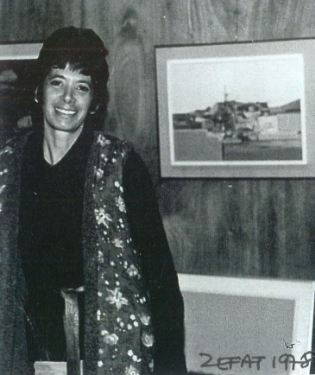 Steffa Reis in Safed, 1978
Steffa Reis in Safed, 1978 -
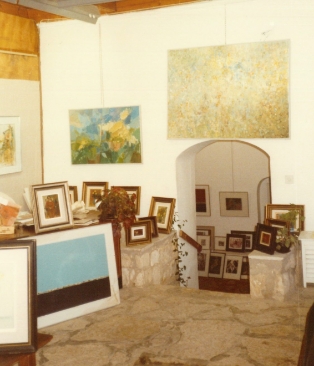 The studio/gallery in Safed, 1980s
The studio/gallery in Safed, 1980s -
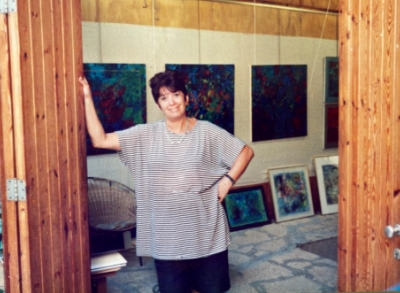 Steffa Reis in her studio/gallery, Safed, 1989
Steffa Reis in her studio/gallery, Safed, 1989 -
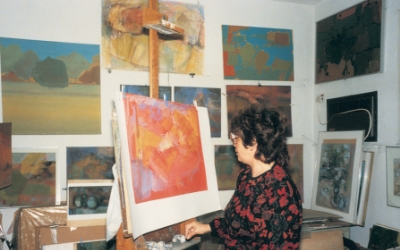 At the studio, Ben Yehuda Street, Tel Aviv, 1980s
At the studio, Ben Yehuda Street, Tel Aviv, 1980s -
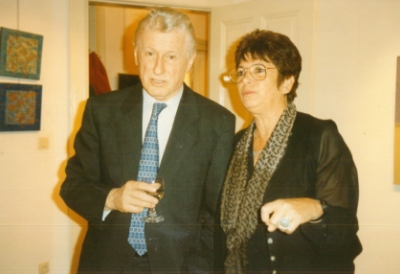 Niels Hansen, German Ambassador to Israel, and Steffa Reis, 1990s
Niels Hansen, German Ambassador to Israel, and Steffa Reis, 1990s -
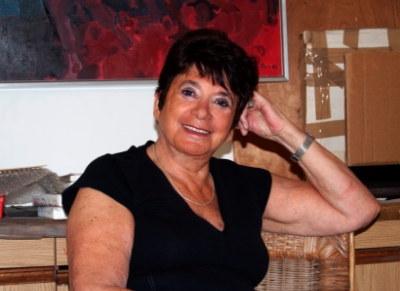 Steffa Reis in her studio, Habashan Street, Tel Aviv, 2010
Steffa Reis in her studio, Habashan Street, Tel Aviv, 2010 -
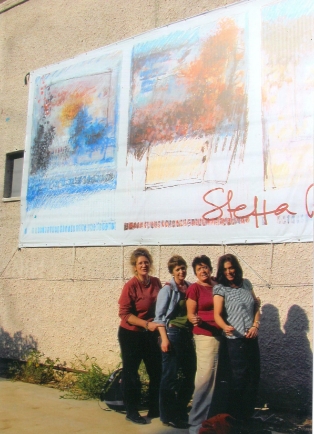 Steffa Reis and her daughters in front of exhibition poster, Tel Aviv Artists House, 2010
Steffa Reis and her daughters in front of exhibition poster, Tel Aviv Artists House, 2010 -
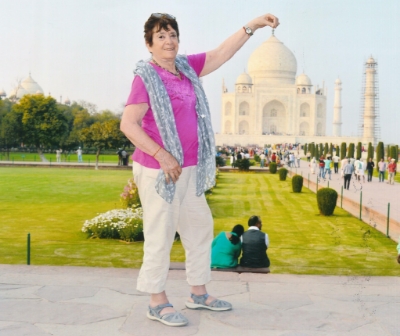 Steffa Reis in India, 2012
Steffa Reis in India, 2012 -
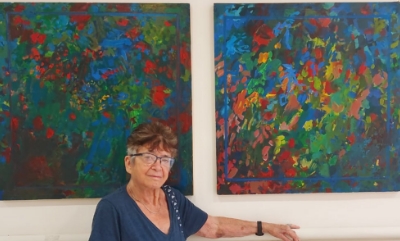 Steffa Reis with Spring I, II (1984) donated to Sheba Medical Center, 2022
Steffa Reis with Spring I, II (1984) donated to Sheba Medical Center, 2022 -
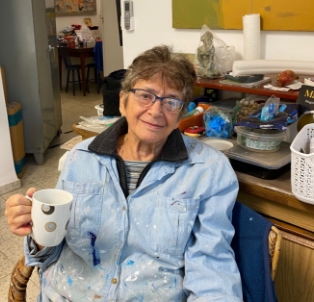 Steffa Reis in her studio, Habashan Street, Tel Aviv, 2022
Steffa Reis in her studio, Habashan Street, Tel Aviv, 2022


